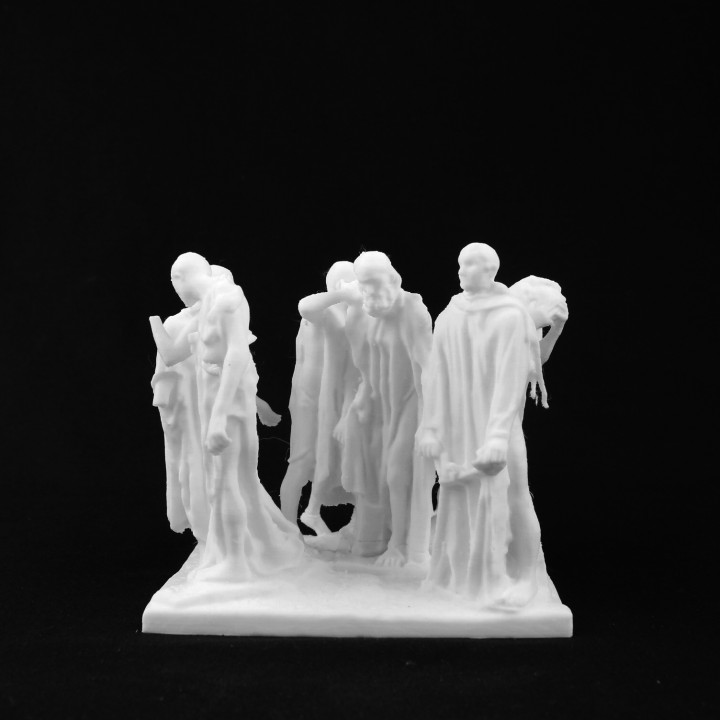
The Burghers of Calais in Calais, France
myminifactory
In 1347, six citizens of Calais gave in after a year-long siege, handing over their city's keys to King Edward III of England. This story was first told by Jean Froissart in his Chronicles (1370-1400). The Mayor of Calais, Omer Dewavrin, suggested building a monument in 1884 to honor the bravery of Eustache de Saint Pierre and his companions. He asked for help from a national appeal fund. Alphonse Prosper Isaac, a painter who lived in Paris but was born in Calais, advised the committee on choosing a sculptor for the project. He suggested Rodin's name. As soon as Rodin started reading Froissart's account of this historic event, he began working on the monument before even being officially asked to do so. He decided not to just represent one of the six burghers but all of them in a slow procession towards death: Eustache de Saint Pierre, Jean d'Aire, Pierre and Jacques de Wissant, Andrieu d'Andres, and Jean de Fiennes. The idea of collective sacrifice was already emphasized in the first maquette. The six figures were presented on the same plane, one next to the other, with no visible order of importance and all wearing loose garments like men about to be executed. They stood on a very high rectangular base adorned with bas-reliefs that formed a triumphal pedestal. This initial model was met with great enthusiasm by the committee. Rodin was officially given the commission for the monument, and he was paid 15,000 francs. He then continued his research into the identity of each figure, making them express the different feelings people experience when they're about to die: despair, resignation, courage, impassiveness, or uncertainty. He modeled them in their actual size first without clothes, then wearing tunics like those worn by condemned men. He placed real shirts dipped in plaster on top of the nude studies so that the body's shape could be seen under the garments. At the same time, he worked on the heads and hands separately. These became sculptures in their own right. The monument was finished in 1889 and first presented at the Monet-Rodin exhibition in the Galerie Georges Petit in Paris that year. This object is part of "Scan The World". Scan the World is a non-profit initiative by MyMiniFactory, which aims to create a digital archive of fully printable sculptures, artworks, and landmarks from around the world for everyone to access for free.
With this file you will be able to print The Burghers of Calais in Calais, France with your 3D printer. Click on the button and save the file on your computer to work, edit or customize your design. You can also find more 3D designs for printers on The Burghers of Calais in Calais, France.
